Flapper Style: Rebels in the 1920s
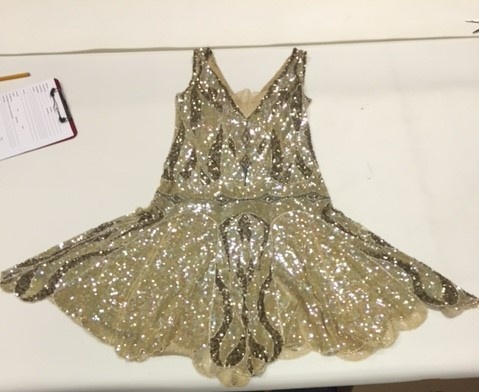 |
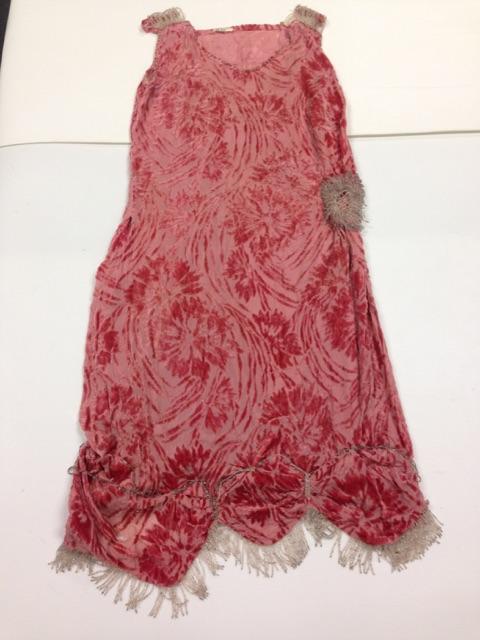 |
For a short time during the twenties, evening dresses rose to the knee (they would quickly drop back to the floor in the 1930s). Pointed or scalloped hemlines, fringe, and beaded tassels hung around the knee of the flapper. This was possibly made popular because it allowed for dancing, an exercise that had become very popular with the young flapper crowd. Likewise, sleeveless dresses became popular which freed up the arms of the dancer.
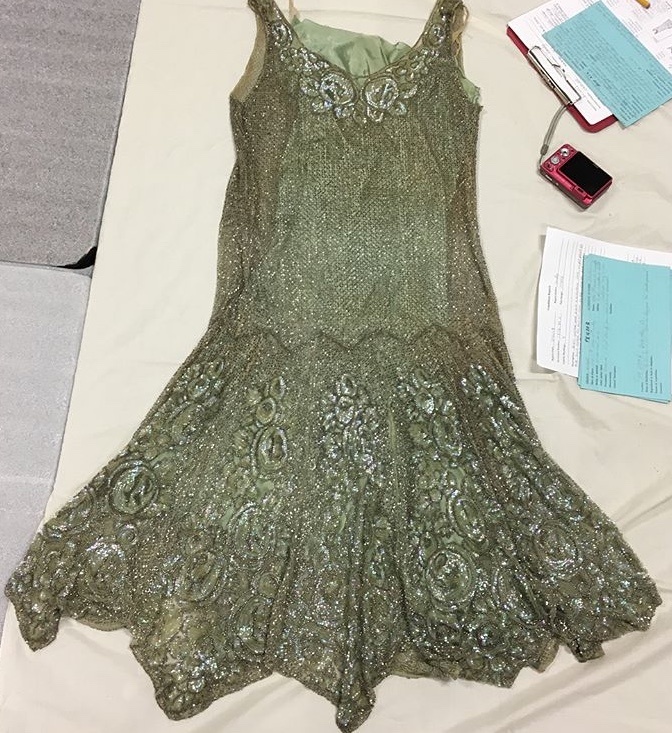 |
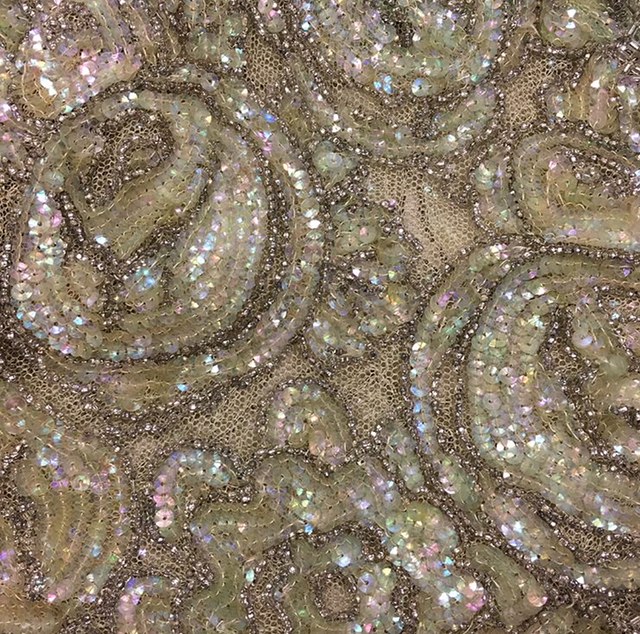 |
A key feature to any flapper dress is how it looked when it moved. As with the dynamic hemlines, beads, sequins, and tassels ornamented dresses to sparkle and dance with the flapper as she did the Charleston and other popular dances. These embellishments would be sewn to fluid textiles like chiffon and organza and would fall straight from the shoulder. Additionally, a flapper would wear sparkling earrings and ornaments on their shoes to add to the shine.
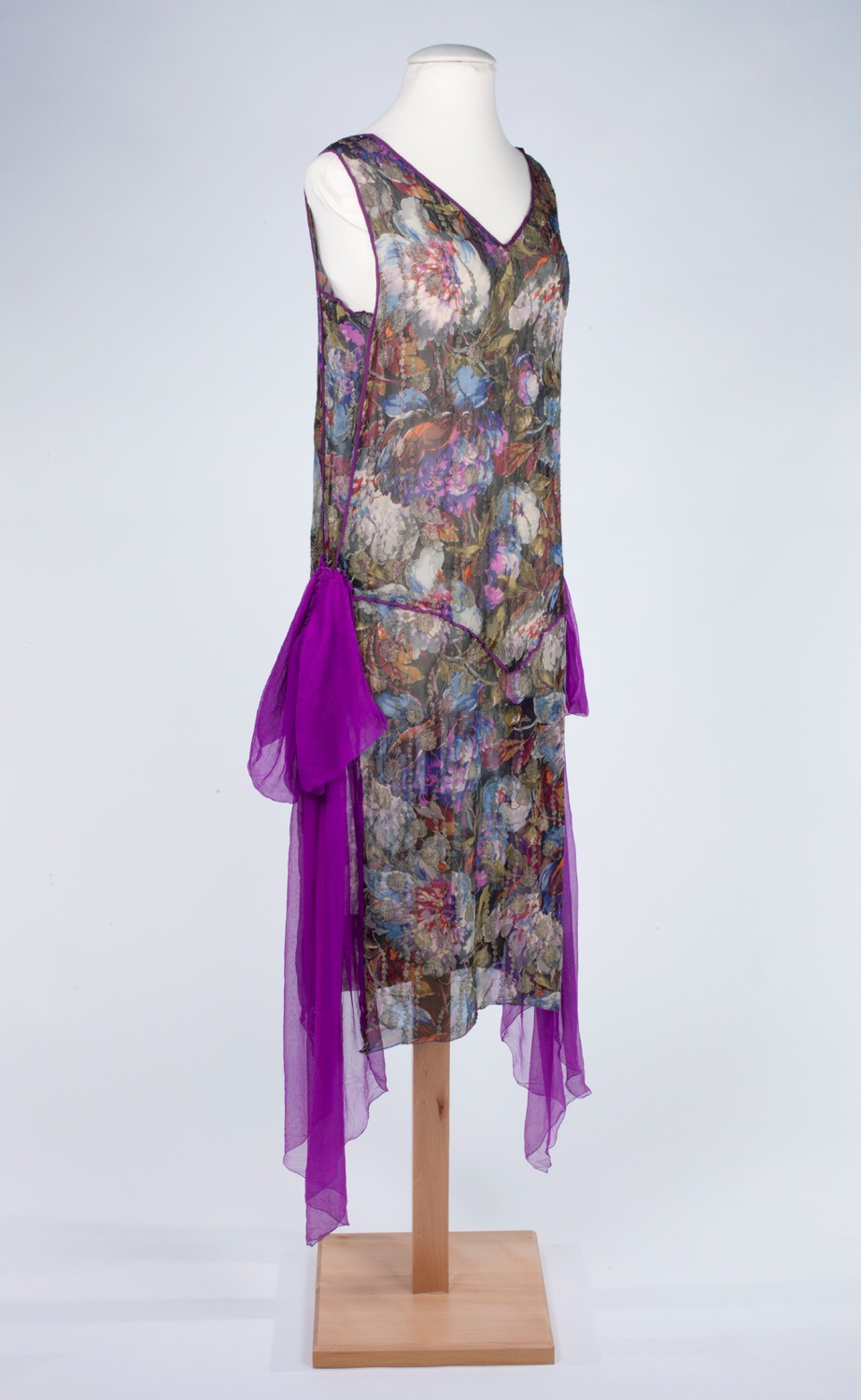 |
Floral printed crepe dress with metallic thread and purple foulards. 1966.51.2 Gift of Miss Shirley Freedman
Far from shrinking from the criticism of the older generation, flappers embraced their rebellious role and relished the spotlight. Another way to stand out in a crowd was with color. This floral chiffon dress has limited sparkle with the metallic thread, yet the vibrant purple foulards (lightweight scarves attached at the waist) would have drawn great attention.
The Wall Street Crash of 1929 and the following economic depression caused the dancing, music, and glitzy party atmosphere of the Jazz Era to stop. The ensuing Great Depression marked the death of the flapper; women couldn’t afford new expensive styles and coupled with the serious tone of the time, reverted to longer austere dresses made of sensible fabrics. The reign of the flapper was over. Though flappers reveled in the spotlight for only a short time, their glitz and glamour was so remarkable that they have remained a symbol of the roaring twenties.
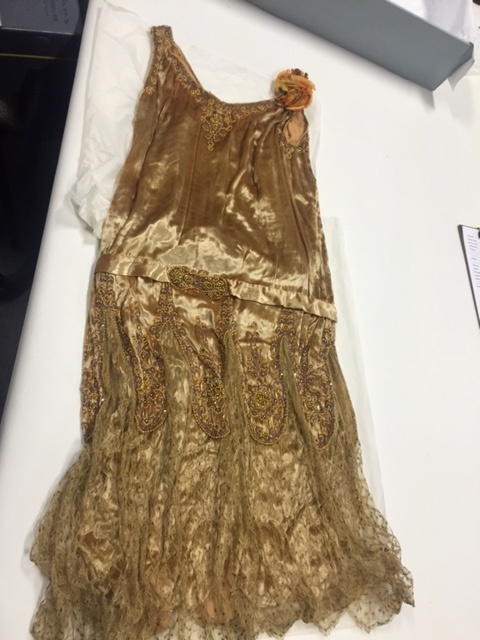 |
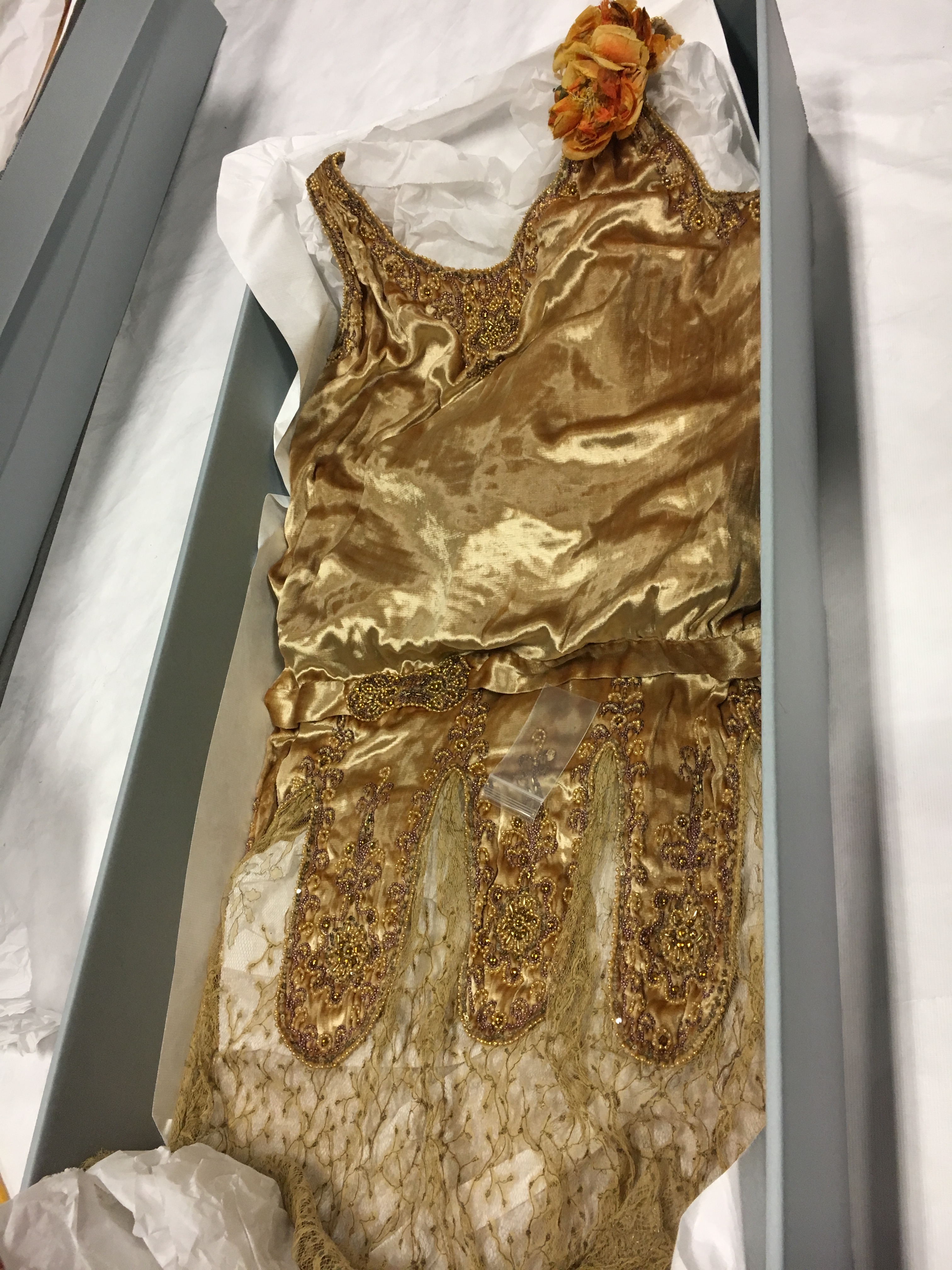 |
Gold velvet dress with beaded net overlay. 1946.52.21 Gift of Mrs. Herman E. Cohn
These flapper dresses were preserved through generous donors of our Adopt-A-Box program. Find out how you can adopt a flapper or other garment through the link below!
New Call-to-action
References:
James, A. E. “Her Majesty the Flapper”. London Magazine (November, 1910)
Mendes, V. and De La Haye, A. 20th Century Fashion (1999).
Spivack, Emily (2013). “The History of the Flapper,” Smithsonian.com. https://www.smithsonianmag.com/arts-culture/the-history-of-the-flapper-part-1-a-call-for-freedom-11957978/ Retrieved 2 November 2017.

